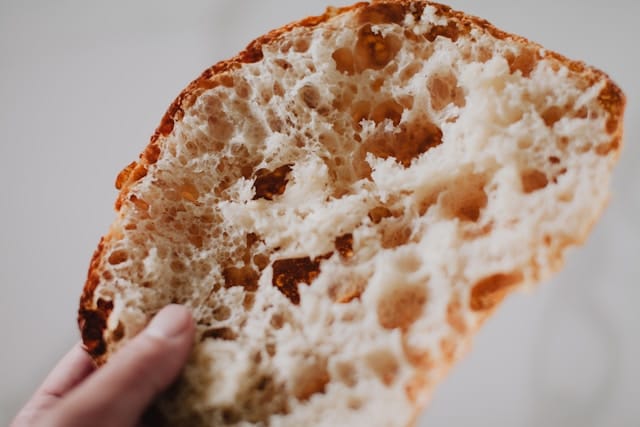If you’re on a ketogenic diet and miss the comforting taste of bread, you’re in luck! Keto bread with yeast offers a delightful solution that not only fits your low-carb lifestyle but also delivers the satisfying texture and flavor of traditional bread. This post will walk you through everything you need to know about making the best keto bread with yeast—from ingredients to tips for perfecting your loaf.
What is Keto Bread?
Keto bread is a low-carb alternative to traditional bread, often made from ingredients like almond flour, coconut flour, and psyllium husk, with some recipes incorporating yeast to add a fluffy, airy texture. It’s specifically designed to be keto-friendly by keeping net carbohydrates to a minimum, usually under 5g per slice.
Why Add Yeast?
Yeast is a vital ingredient for keto bread because it provides the lightness and rise that can be difficult to achieve using just low-carb flours. Yeast also adds that unmistakable “bread” flavor that many keto alternatives lack. Traditional bread relies heavily on gluten for structure, but in keto bread, yeast works its magic on alternative flours, giving you a more authentic bread experience.
Ingredients for the Best Keto Bread with Yeast
1. Almond Flour
Almond flour is one of the primary ingredients in keto bread. It’s low in carbs and rich in healthy fats, protein, and fiber, making it a nutritious choice. Almond flour also provides a slightly nutty flavor that works well in most bread recipes.
2. Coconut Flour
Coconut flour is often used in combination with almond flour because of its high fiber content and moisture-absorbing properties. It helps to balance the texture and keeps the bread from being too dense. Coconut flour is gluten-free and adds a subtle sweetness.
3. Psyllium Husk Powder
Psyllium husk is a crucial ingredient for texture, mimicking the stretchiness of gluten. It also helps hold the bread together, preventing crumbling, which is common in gluten-free breads. Moreover, it’s high in fiber and aids digestion.
4. Nutritional Yeast
Though not always used as the primary leavening agent, nutritional yeast offers a rich, cheesy flavor to keto breads. It is also a powerhouse of B vitamins and adds a nutrient boost to your loaf, making it a great addition to any keto diet.
5. Active Dry Yeast
This is the yeast that will make your keto bread rise. Make sure you activate it properly with warm water and a touch of sweetener (such as maple syrup or honey, which gets consumed by the yeast, leaving no sugar behind).
6. Eggs
Eggs are essential in keto bread to provide structure and moisture. They also help bind the ingredients together, preventing a crumbly texture.
7. Apple Cider Vinegar
Adding vinegar helps strengthen the bread’s structure and contributes to its rise. This is especially important in keto bread since we’re not using gluten to hold everything together.
8. Sea Salt
A pinch of sea salt adds depth of flavor to your bread, bringing out the nuttiness of the almond flour and balancing the sweetness from coconut flour.
YOU MAY ALSO LIKE: What is the Fibre First Diet?
How to Make the Best Keto Bread with Yeast
Step 1: Activate the Yeast
Start by warming 1/4 cup of water to about 105-110°F (40-43°C). Add 1-2 teaspoons of maple syrup or honey (don’t worry about the sugar—it gets eaten by the yeast) and sprinkle 2 teaspoons of active dry yeast on top. Stir lightly and let it sit for about 5-10 minutes until frothy.
Step 2: Combine Dry Ingredients
In a large bowl, mix 2 cups of almond flour, 1/3 cup of coconut flour, 2 tablespoons of psyllium husk powder, and a pinch of sea salt. Stir these dry ingredients well to ensure there are no clumps.
Step 3: Mix Wet Ingredients
In another bowl, whisk together 3 eggs, 1 tablespoon of apple cider vinegar, and 1/4 cup of melted butter or coconut oil. Once your yeast is frothy, add it to the wet ingredients and mix well.
Step 4: Combine and Knead
Slowly add the wet ingredients to the dry ingredients and mix until a dough forms. The dough should be slightly sticky but firm enough to shape. If it’s too wet, add a little more almond flour. If it’s too dry, sprinkle a bit of water.
Step 5: Let It Rise
Form the dough into a loaf shape and place it in a greased loaf pan. Cover it with a damp towel and let it rise in a warm place for 1-2 hours. Since we’re not using gluten, it may not rise as much as traditional bread, but it should still expand.
Step 6: Bake
Preheat your oven to 350°F (175°C). Bake the bread for 35-45 minutes or until the top is golden brown and a toothpick inserted comes out clean. Let the bread cool completely before slicing, as this helps it firm up and avoids a gummy texture.
Tips for Perfect Keto Bread with Yeast
- Check Your Yeast: Always make sure your yeast is fresh and active by testing it with warm water and sweetener before using.
- Use a Bread Pan: A non-stick or silicone loaf pan helps maintain the bread’s shape during baking.
- Cool Completely: Keto bread can be dense and slightly moist inside, so it’s crucial to let it cool completely before cutting into it.
Health Benefits of Keto Bread with Yeast
Keto bread not only satisfies your cravings for bread but also offers numerous health benefits:
- Low in Carbs: Most slices of keto bread contain less than 5 grams of net carbs, making it perfect for those following a low-carb or ketogenic diet.
- High in Fiber: Thanks to almond flour and psyllium husk, keto bread is rich in fiber, aiding digestion and promoting gut health.
- Rich in Healthy Fats: Ingredients like almond flour and coconut oil provide heart-healthy fats that are essential for energy on a keto diet.
- Gluten-Free: Unlike traditional bread, keto bread is naturally gluten-free, making it suitable for people with gluten intolerance or celiac disease.
Frequently Asked Questions
Can I freeze keto bread with yeast?
Yes! Keto bread freezes exceptionally well. Slice the bread before freezing to make it easier to grab a single serving when needed. Wrap it tightly in plastic wrap and store it in a freezer-safe bag. To reheat, pop it in the toaster or warm it in the oven.
What can I use instead of almond flour?
If you’re allergic to nuts, you can substitute sunflower seed flour for almond flour in a 1:1 ratio. Just note that the bread may take on a slightly different flavor and color (sunflower seeds can react with baking powder to create a green hue).
How long does keto bread last?
When stored in an airtight container at room temperature, keto bread lasts for about 3-4 days. You can extend its shelf life by refrigerating it, which will keep it fresh for up to a week.


